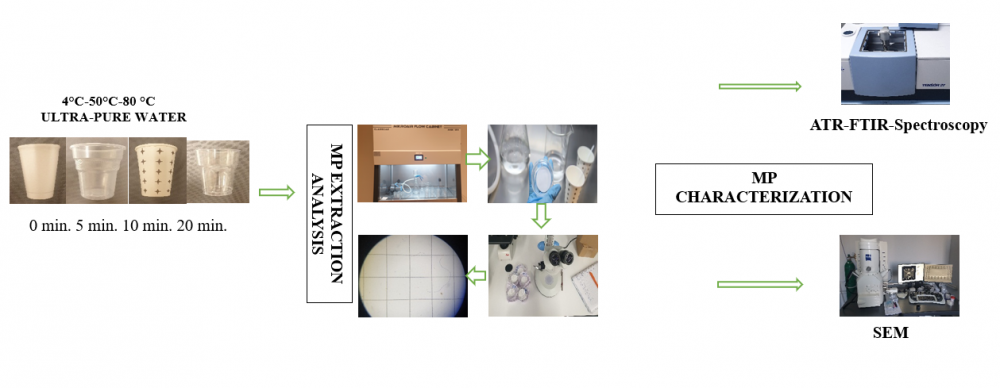JOURNAL 3065
Records of Agricultural and Food Chemistry
Year: 2024 Issue: 3 Special Issue: Abstracts 3rd. TCS, International Food Chemistry Congress February 29-March 03,2024 Antalya Türkiye
p.26 - 26
Viewed 871 times.
GRAPHICAL ABSTRACT

ABSTRACT
Microplastics (MPs) are one of the most important food and environment pollutants arise in recent years. Plastics are commonly used in many places and reduced to micron- and nano-size by physical effects such as sunlight, winds, flows, living organisms, waves, external impact and/or intentionally for industrial purposes. Plastic particles <5 mm in size are named MPs, and these particles, which are found everywhere in the ecosystem, can also enter the human diet by food systems. Studies have clearly shown that packaging materials could be one of the major sources of MPs present in the food and beverages. In this study, the number of MPs released from 5 types of disposable plastic cups (PS, PE coated paper cups, EPS, PP, PET) into water at different temperatures (4 °C, 50 °C, and 80 °C) were analyzed. For this purpose, numbers of MPs at different exposure times (0, 5, 10 or 20 min) were determined. Standard filtration techniques were used to determine the number of MPs released into the plastic cups. The filters were stored in glass petri dishes for characterization of MPs, and the particles were classified according to color and shape characteristics. The chemical and morphological changes caused by different temperatures on the inner surface of plastic cups were determined by ATR-FTIR and SEM. The average number of MPs obtained was 574.33±374.12 particles/L. The highest MP particle was determined in PP cups with 1420 p/L (50 °C 20 min.) while the lowest MP was in PE-coated paper cups with 126 p/L (4 °C, 0 min). SEM images demonstrated the abrasion on the surface of the plastic cups as a result of hot water exposure. Again, FTIR results showed that intensities of absorbance levels at some wavelengths were decreased after the water treatment although the spectra of the plastics did not change. The average MP intake of the consumers was also calculated; for example, the MP exposure during the consumption period was determined as 18720-73840 MPs/year. In conclusion, the result of this study confirmed that disposable plastic cups could be a critical source of MP contamination of the beverages consumed in daily bases, and a necessary attention must be taken into account for their risks to humans and the environment.
KEYWORDS- Microplastics
- contamination
- human exposure
- beverages